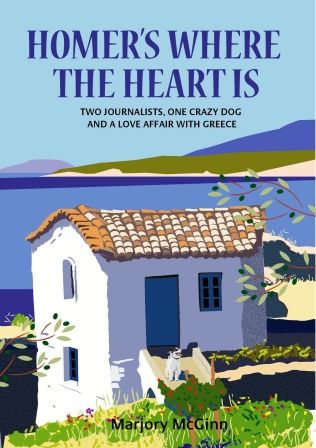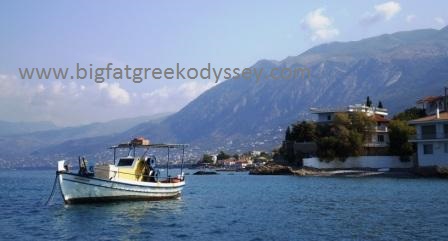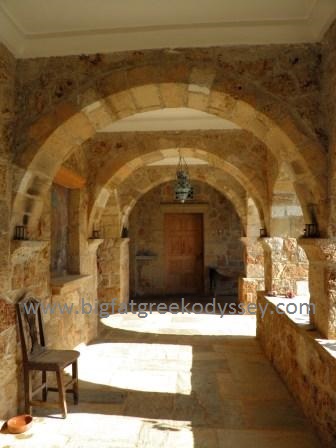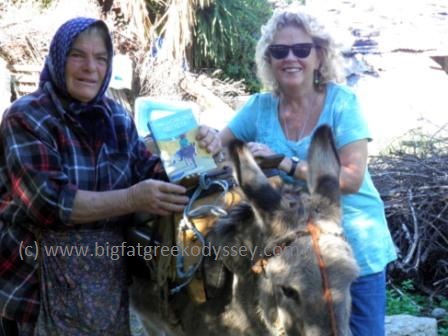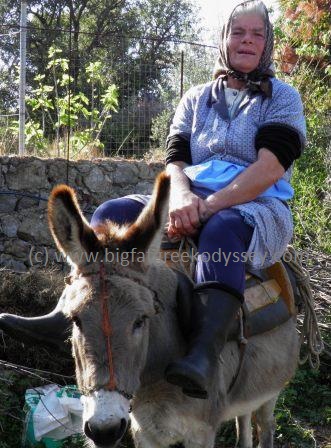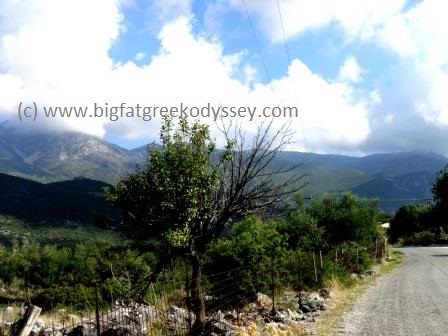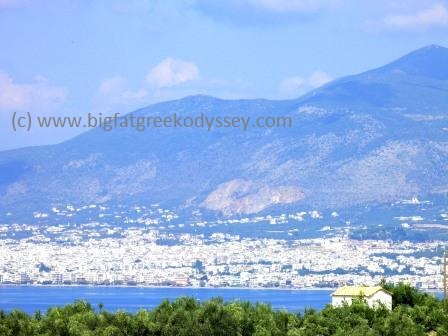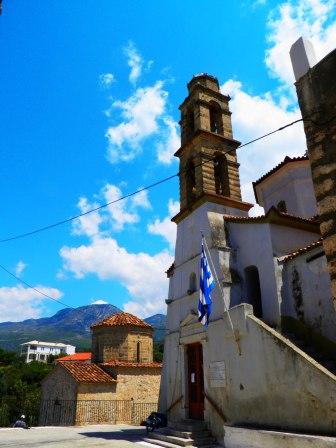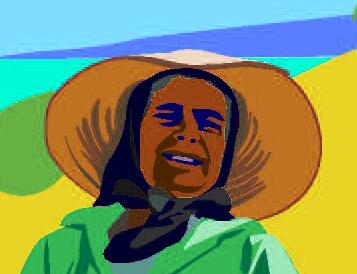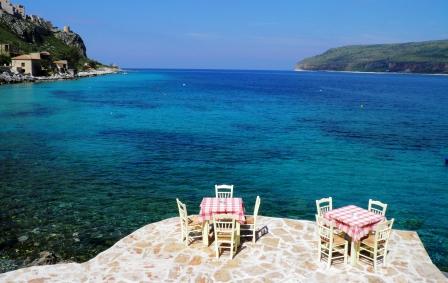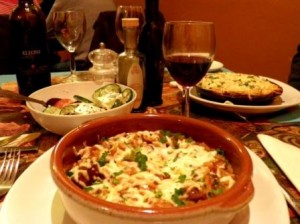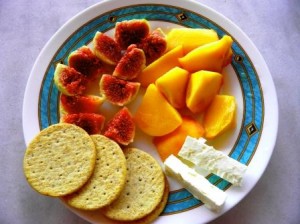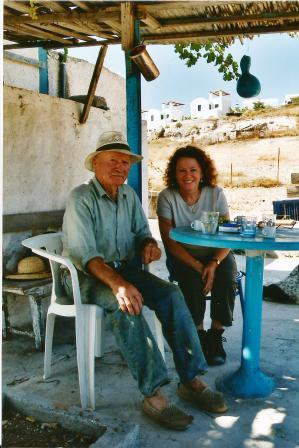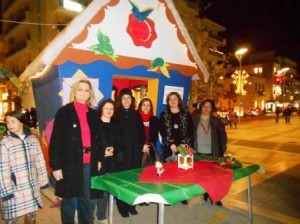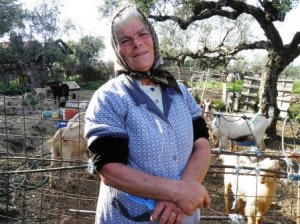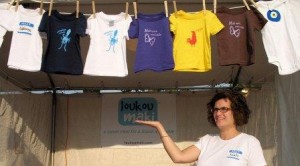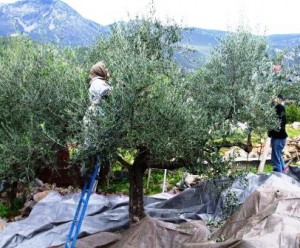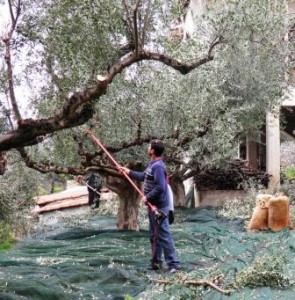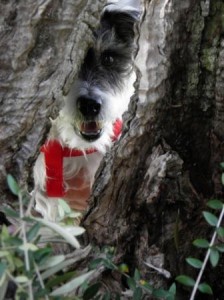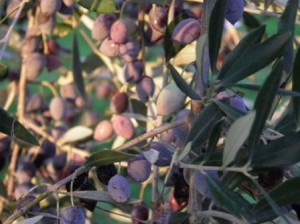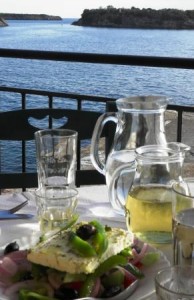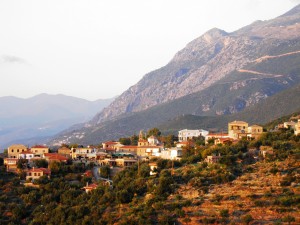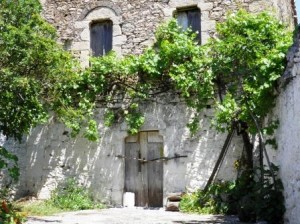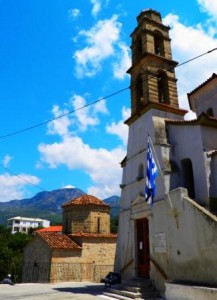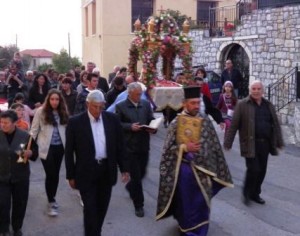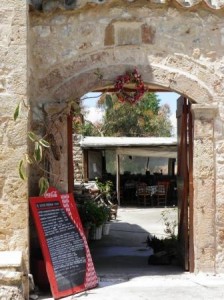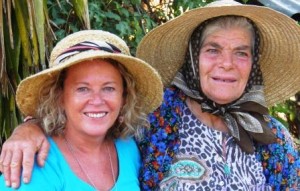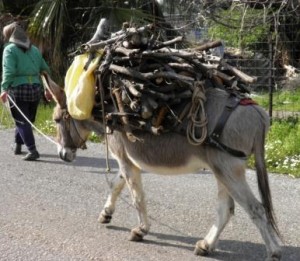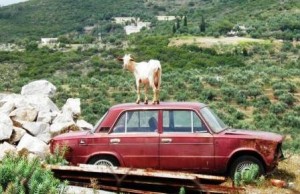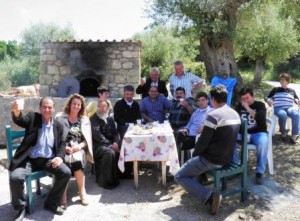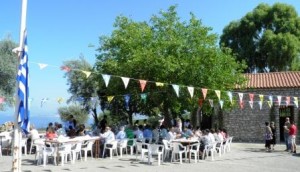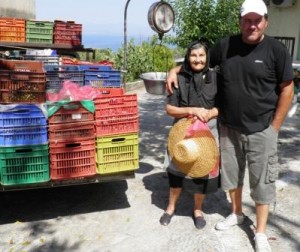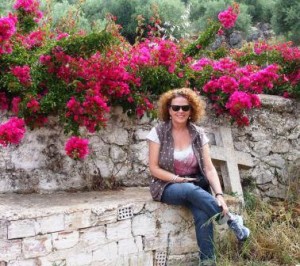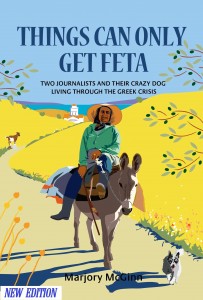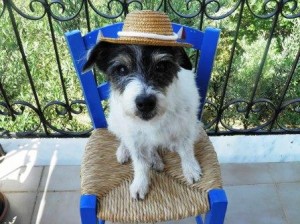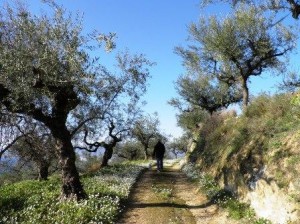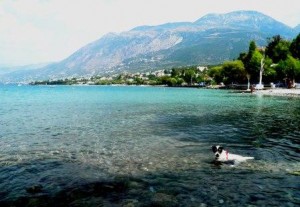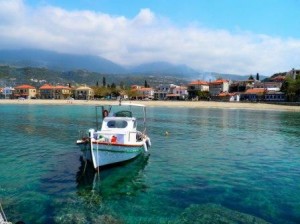
Stoupa beach in the Mani
THE Hollywood movie Before Midnight is now doing the rounds with mixed reviews, but one aspect is indisputable – the real star of the piece is the southern Peloponnese.
Focus on this wonderful region of Greece has been long overdue. Having spent three years living in the Mani region (situated in the middle of the three peninsulas), I can vouch for its beauty and real authenticity.
From my experience there, I have drawn up a list of some favourite places to visit, mostly in the Mani. The recommendations for tavernas and other businesses are based on my personal taste alone. Come to the region one day so you can draw up your own list of favourites.
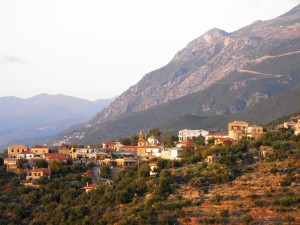
Hillside village of Megali Mantineia
* BEST HILL VILLAGE: Megali Mantineia, in north Mani.
There are many lovely rural villages in the southern Peloponnese but this is my favourite, partly because my partner Jim and I, and our mad Jack Russell dog Wallace, spent the first year of our Greek adventure here and it was the inspiration for my book Things Can Only Get Feta. It’s a short drive from popular Santova beach and nestles on a quiet hillside beneath the north Taygetos Mountains. It’s an unspoilt village with a tight-knit community where most people work as goat farmers or harvest olives.
Unusually for a rural village, there are four very good family-run tavernas here offering traditional dishes. The Lofos (27210 58630), with its vast terrace overlooking the Messinian gulf is on the drive up from the sea; Iliovasilema, or more commonly called Yioryia’s after the owner’s wife (27210 58660), and nearby Sotiris Taverna (27210 58191); Anavriti Taverna (27210 58062), behind the main church, and the Kali Kardia kafeneion in the heart of the village (27210 58306).

Dining experience in Kardamili
* BEST COASTAL VILLAGE: Kardamili
Kardamili is an hour’s drive from Kalamata and is the village where some of Before Midnight was filmed. It has a nice old harbour and pebble beaches. The Taygetos mountains form a picturesque backdrop and there is an historic area with traditional Maniot tower houses. From the village are good walking tracks up to the villages behind, like Agia Sophia and Petrovouni. The late Patrick Leigh Fermor’s house is situated at the southern end beside Kalamitsi beach, with excellent swimming and snorkelling.
Favourite walk: from the old town up to Agia Sophia. Favourite taverna: Hariloas (27210 73373), by the harbour, for its charming owner Maria, and the food, of course. Try the doorstep-sized moussaka, always freshly baked.
Favourite shop: The Bead Shop on the main street of Kardamili (693 9455 365), run by Gill Rochelle. This is a treasure trove of unusual handmade jewellery and a trillion fab beads if you want to get creative while on holiday and make your own. Gill is also very knowledgeable about this area.
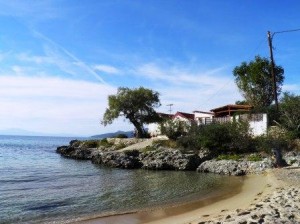
Kalogria beach with the house of George Zorbas
* BEST LITERARY CONNECTION: Kalogria beach
Ten minutes further south from Kardamili is the sheltered sandy cove where much of the book Zorba the Greek was conceptualised. Greek writer Nikos Kazantzakis spent some time here with the real George Zorbas when they were running a lignite mine nearby (see earlier blog post in November for more details). The beach here, where the writer lived in a wooden hut, now demolished, was also the inspiration for the scene in the book where Zorba teaches the narrator to dance the sirtaki. Stoupa is a close second, a long sandy beach nearby with a good selection of tavernas.
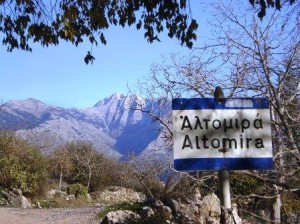
Altomira village in the Taygetos mountains
* BEST LOFTY VILLAGE: Altomira
This is a fabulous village in north Mani at nearly 3,000 ft with a stunning view towards Profitis Ilias, the highest peak in the Taygetos range. The village is partially in ruins, though many Greeks are buying houses and renovating them for summer holidays. The best approach is from the main Kalamata to Stoupa road with the turn-off to Sotirianika, and a 4×4 is recommended.
If you’re a fit, keen walker, there is an old stone kalderimi (donkey track), called the Biliova, from Sotirianika up the side of a hill that will lead you to the village, with great views. You will need to get hold of a local walking map.
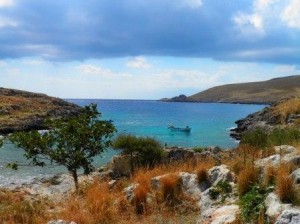
Near the Cave of Hades, Cape Tainaron
* BEST SPOOKY SITE: The Cave of Hades
This is situated on Cape Tainaron at the tip of the Mani peninsula. From the end of the road, at the car park, you take the path down to a nearby cove and the cave is behind a high rocky outcrop, covered by bushes. This is the doorway to the Underworld mentioned by ancient writers and scholars. The place where Hercules performed his 12th labour, dragging out the three-headed dog Cerberus. From here there is a path to some ancient Roman ruins with mosaics and further on is the lighthouse on the southernmost point of Greece.
Favourite taverna: This is on the road down to the fascinating town of Areopolis, and the Cape, at wide Limeni Bay near Otylo. Takis Taverna (27330 51327) is right by the water where fishing boats pull in and land the day’s catch.
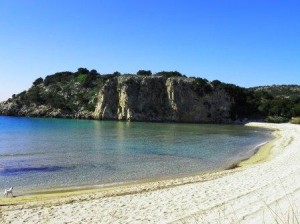
Stunning Voidokoilia beach
* BEST BEACH: Voidokoilia
Apart from the long peaceful Santova beach in the Mani, the most perfect, photogenic beach is Voidokoilia, near Navarino Bay on the Messinian peninsula (left-hand prong). Shaped like the Greek letter omega Ω, it has two headlands, one with a ruined Frankish castle on top. The sand here is soft and the water pale and silky. There is nothing much here apart from the beach, so head back towards Pylos town to the fishing village of Yialova with its own sandy beach and a row of nice tavernas and cafes by the water.

View across Kalamata city centre
* BEST CITY: Kalamata
Okay, it’s the only city of the southern Peloponnese, but as Greek cities go, this one is very appealing. Set at the head of the Messinian Gulf, it has the lot: a long clean city beach; history (the historic centre, Frankish castle, cathedral and archaeological museum); a vibrant café scene along Navarino Street; a bustling marina with a selection of tavernas.
Favourite tavernas: Koilakos for fish, especially calamari and grilled octopus, Navarinou St, 12, (27210 22016); the Argo, Salaminos St 52, (27210 25380). Favourite dish, grilled sardines. The other dish is the lovely Adonis, a very entertaining waiter, and a city celebrity. Ta Rolla, Sparta St, 53 (27210 26218). An old-style taverna in the market area of the city with wine barrels full of a lovely local brew and specialties like bean soup and stuffed tomatoes.
Best monastery/silk workshop in Kalamata:
Head to the 18th century Kalograion (Nuns’) Monastery in Mystra Street (near the Ypapanti Cathedral). Once internationally famous for its silk products, made at the monastery by the nuns, it still produces many lovely items in-house though the nuns number only a couple of dozen these days. The shop here stocks unique hand-printed scarves, embroideries, as well as small icons and religious books.
This is an oasis of calm in the city with a courtyard shaded by orange trees and two small churches. Later, head to the Ypapanti Cathedral to see the ‘miraculous’ icon of the Panagia (Virgin Mary) saved from a fire in the 19th century during a skirmish with the Turks, and the patroness of this city.
Other places to visit in the southern Peloponnese: the archaeological site of Ancient Messene, north-west of Kalamata, close to the village of Mavromati; Nestor’s Palace, one of the finest Mycenaean sites in southern Greece, near Pylos. The twin “eyes of the Venetian empire” Koroni and sprawling Methoni castles at the tip of the Messinian peninsula; lastly, Monemvasia, Greece’s “rock of Gibraltar” in the Laconian peninsula.
For more information about what to see and do in the southern Peloponnese go to our home page on www.bigfatgreekodyssey.com or visit www.mythicalpeloponnese.gr run by the Greek National Tourist Board. A great site for walking tracks in the Mani and other information: www.insidemani.gr
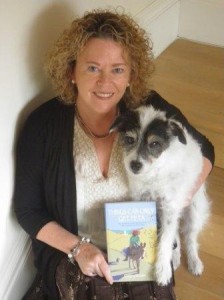
Marjory and Wallace with the new book
A book about living in Greece
For more details about my book, Things Can Only Get Feta (Bene Factum Publishing, London) based on three years living in the Mani, southern Greece during the crisis, visit my website www.bigfatgreekodyssey.com or visit Facebook www.facebook.com/ThingsCanOnlyGetFeta
Visit Amazon to buy the book (Kindle version – new edition). A new edition of the paperback will also be available shortly.
To read my recent story in The Scotsman newspaper about the southern Peloponnese please click on the following link: http://www.scotsman.com/lifestyle/features/travel-mani-delights-in-greece-1-2976801
If you are a resident or frequent visitor to the southern Peloponnese please share your favourite place and tell me what it means to you. Click on ‘comments’ link below

© Text and photographs copyright of the authors 2013
To leave a comment please click on the comment link below
Like this:
Like Loading...
